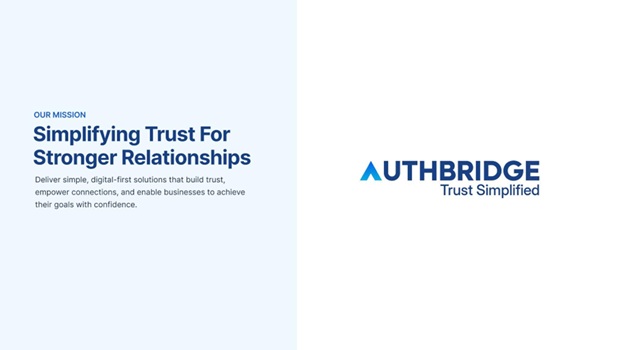An Article Published in January, 2021 Edition of PCQuest by Mr. Vishal Goyal PGDM, Batch 2010 Head- Digital Transformation CET, Fujitsu Consulting India
An Article on Top 3 Trends in Analytics has been published in PCQuest; which is India’s top IT portal for technology news and part of the Cyber Media group of publications that also publish Dataquest.
The article talks about NLP, graph, and how augmented analytics are transforming the way businesses use analytics. Based on author’s request article is reproduced here as his contribution to SAMVAAD; Feb, 2021.
Analytics has become an important aspect for any business in the modern times and comes handy while identifying the right target audience, their habits and most importantly, their feedback. Brands rely on these insights to upgrade themselves to meet the evolving needs of their customers and stay ahead of the curve. Insights-driven businesses are growing at an average of more than 30% annually and are on track to earn USD1.8 trillion by 2021 reveals a recent report by Forrester Research. Similar research from other consulting organizations highlights the emergence of firms that are dominating their sectors as well as expanding into new markets by generating actionable insights through data collection and analytics.
Below are top three technology trends in the space of analytics which will make a huge impact in 2021 and beyond:
NLP Analytics NLP and Conversational Analytics provides any user with an easier way to ask questions about data, as well as receive an explanation of rendered insights. In combination with augmented analytics capabilities, a salesperson might, for example, ask for an analysis of sales or a pipeline. Or the system may have learned that the sales manager also looks at this information. Based on that person’s role and/or behavior, they will be served up an explanation or narrative —in text or voice — of statistically important drivers of change. this ability will continue to grow in sophistication. For example, currently, you may be able to ask things such as “What is the average spend per customer this fiscal year?” As the technology evolves, you will be able to ask things such as, “What is the average spend per customer within a 10-mile radius this fiscal year versus last fiscal year?”
Consider the timesheet data for your business unit which includes information for several delivery units with split across different projects, different effort types (billable, non-billable, leaves, training amongst others) and for thousands of employees. One way of analyzing this information is to build standard dashboards with predefined columns, filters and business logic to show the numbers. What would be fantastic is to be able to ask a question such as “timesheet data by project for Vishal Goyal for Dec-2020”. this is possible by having a linguistic schema defined and imported into the tool which will recognize “Vishal Goyal” as employee name, understand what “project” and “timesheet” means and use NLP engine to display results. Being able to do such analysis makes it very powerful.
Graph Analytics Graph analytics is a set of analytic techniques that allows for the exploration of relationships between entities of interest such as organizations, people and transactions. Graphs in a data and analytics context are concerned with the modeling, finding and traversing of relationships. the number of use cases is increasing with the need for complex analysis – fraud detection to customer influencer networks, through to social networks and semantic knowledge graphs. Conversational analytics, health advisors, financial crimes and risk detection can also leverage graph capabilities. Covid-19 has spread from one city to the whole world. And this spread has happened over a period of time across continents. If one had a way to establish relationships between different cities, countries, continents in order to track an infected citizen and additional details on him, it would be a fantastic way to analyze and contain the spread. And if this information is available in real time, we can look at stopping the spread. All this is possible using graph analytics. Graph Analytics Graph analytics is a set of analytic techniques that allows for the exploration of relationships between entities of interest such as organizations, people and transactions. Graphs in a data and analytics context are concerned with the modeling, finding and traversing of relationships. the number of use cases is increasing with the need for complex analysis – fraud detection to customer influencer networks, through to social networks and semantic knowledge graphs. Conversational analytics, health advisors, financial crimes and risk detection can also leverage graph capabilities. Covid-19 has spread from one city to the whole world. And this spread has happened over a period of time across continents. If one had a way to establish relationships between different cities, countries, continents in order to track an infected citizen and additional details on him, it would be a fantastic way to analyze and contain the spread. And if this information is available in real time, we can look at stopping the spread. All this is possible using graph analytics.
Augmented Analytics Augmented analytics enables AI and ML-assisted data preparation, insight generation, and insight explanation to augment how business people and analysts, explore and analyze data in analytics and BI platforms. It also augments the expert and citizen data scientists by automating many aspects of data science and ML model development, management and deployment. Augmented analytics uses ML/AI techniques to automate key aspects of data science and ML/AI modeling such as feature engineering and model selection (autoML), as well as model operationalization, model explanation and, ultimately, model tuning and management. Before augmented analytics, data scientists took months to build models to find the best handful of hybrid seed combinations out of thousands to sell to farmers. With augmented analytics, domain specialist geneticists took over the process and reduced process duration to days. Consider the timesheet data use case I mentioned above for NLP analytics. take a scenario where you as a business user want to do a root cause analysis as mentioned below:
- Which project contributes maximum billable hours to total hours in a month?
- Which employee has maximum non-billable hours in a month on a particular project and particular business unit?
- Which delivery unit has most leaves being taken?
Being able to do this without any data scientist and using simple tool capabilities is extremely powerful, and Augmented Analytics can be extremely handy in such scenarios.
Disclaimer: The views and opinions expressed in this article are those of the writer. They do not purport to reflect the opinions or views of the Institute or its employees.




